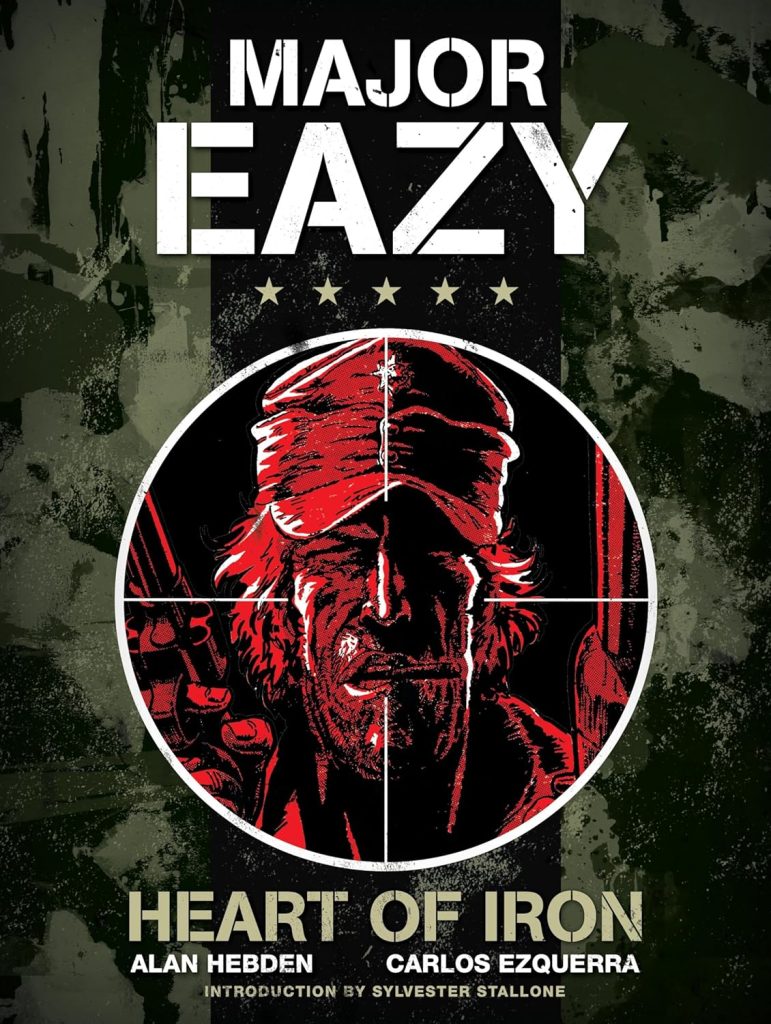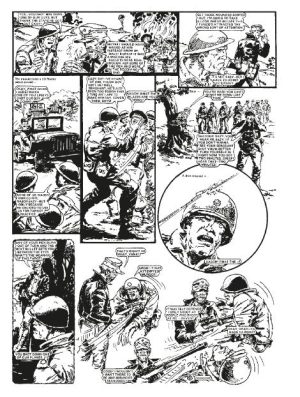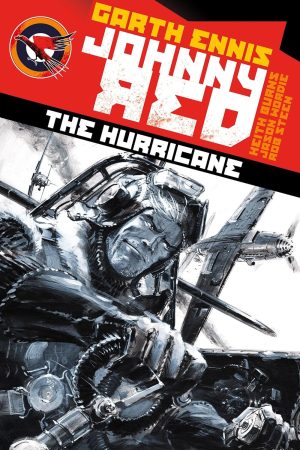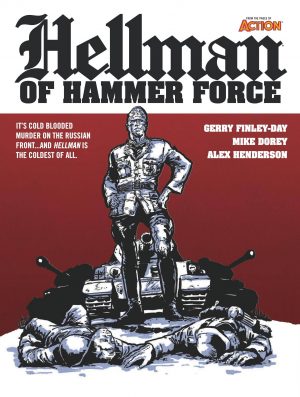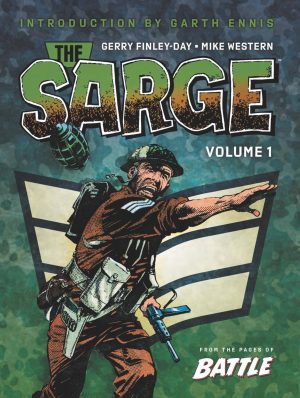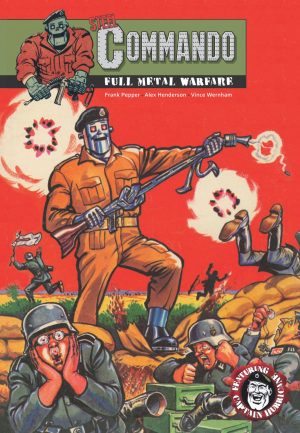Review by Ian Keogh
A mainstay of 1970s weekly war themed comic Battle, Major Eazy was in the long tradition of near invincible World War II Nazi-bashers in British children’s comics. Writer Alan Hebden envisaged him as a British version of Clint Eastwood’s Western characters, but artist Carlos Ezquerra modelled him on fellow 1960s movie icon James Coburn.
Look at him logically and contradictions abound, not least Eazy despising any form of authority yet being a major, but that misses the point. He’s a rebellious anti-hero for youngsters, gloriously drawn as perennially scruffy, while casually shooting grenades from the air with his rifle, playing poker with Germans and sending a message attached to a crossbow bolt fired at Nazis. When not amusing with Eazy’s antics Hebden includes shocking moments, their ability to stun readers sometimes founded on Eazy noticing what no-one else has. For all his anti-authoritarian attitude Eazy is loyal to his troops and exceptionally brave, living a charmed life during wartime.
Hebden was a history buff, and uses actual events to construct episodes, which follow the gradual route northwards taken by British troops in Italy from 1943 onwards. He’ll occasionally hint at Eazy’s troubled past, but the emphasis is on action, cleverly plotted with credit due for what’s packed into roughly twenty panels per episode, increased to 25 once the feature moves from Battle’s colour pages. This can lead to rushed endings. Stories follow a pattern of Eazy pulling off impossible feats, but Hebden varies the situations, which range well beyond usual Nazi attacks to investigating shortages in medical supplies and saboteurs. He’ll also include historical minutae, like Ukranians fighting with the Nazis as if they surrender they’ll be dealt with by the Soviet secret police when returned. It’s Eazy’s laconic, adventurous personality that’s the biggest strength, though.
Ezquerra’s never been a precise artist with a clean line, and his rough style is ideally suited to both Eazy’s personality and the wartime surroundings, which look devastated and dangerous. Due to the few panels and dense plots he packs a lot into every panel, and in addition to busy battle scenes he’ll convincingly deliver a boat chase through Venice, with no short cuts taken in presenting the city. Ezquerra’s pages are a masterclass in telling a story and putting the effort in.
A note on the indicia page asks for indulgence concerning the quality of reproduction, referring to the original material as rare, which is the case. However, it’s more likely the cost of scanning colour pages and retouching them for black and white reproduction was unpalatable as there’s no smudging with the black and white pages.
Qualms about reproduction notwithstanding, in 2012 this was to only way to piece together Eazy’s entire Italian campaign. However more recently The Italian Campaign not only features this entire content, but extends it to Eazy’s desert exploits and features colour pages in colour. The downside is it’s in paperback rather than the attractive hardcover Heart of Iron. Either way, the stories are recommended not just to those who grew up reading them, but to anyone who enjoys an imaginative World War II adventure.
